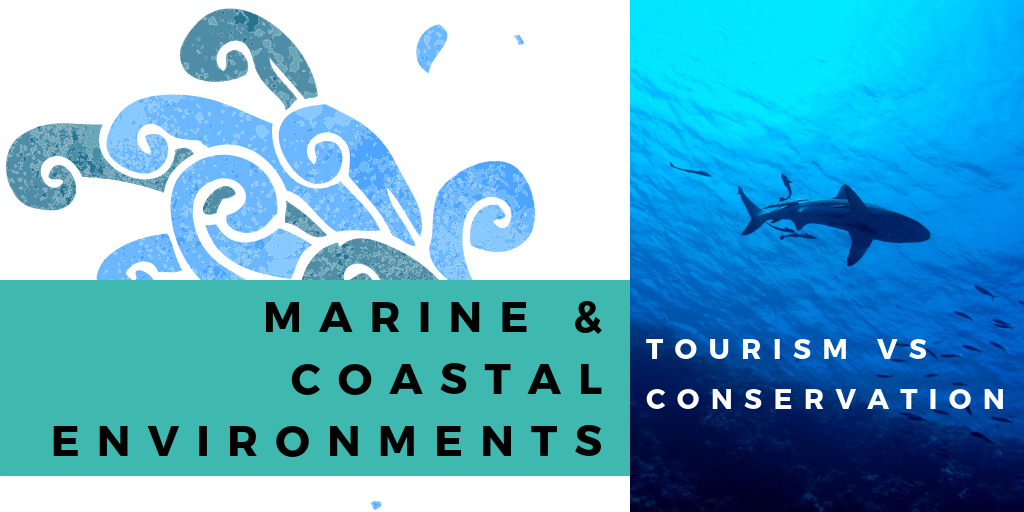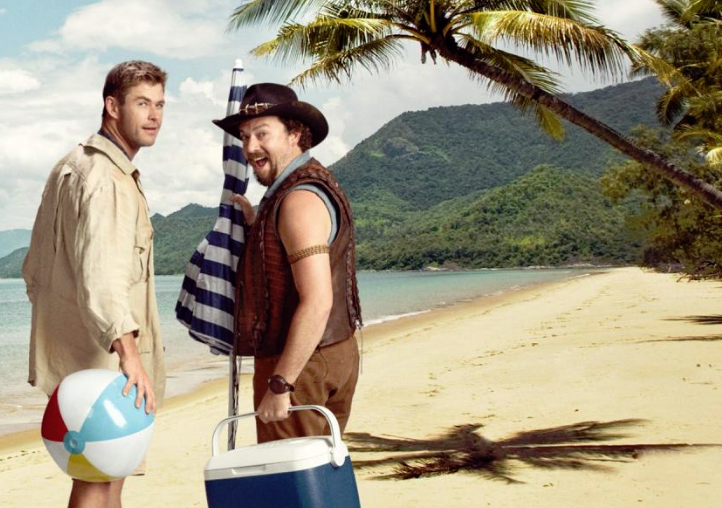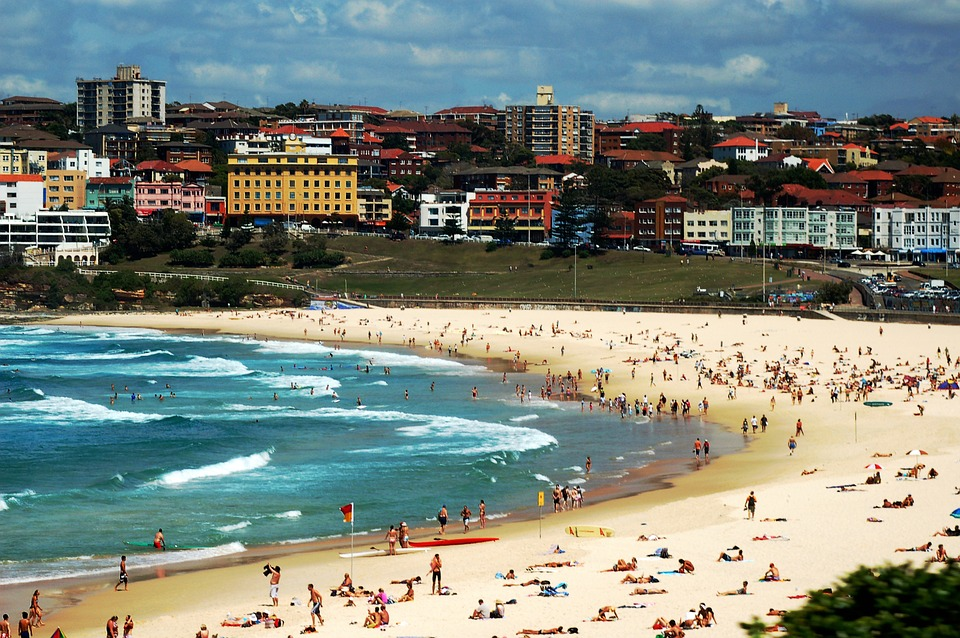Australia has arguably some of the best beaches, coastal environments and marine life in the world. Its no wonder then that many of our national and state tourism campaigns use marine and coastal environments, wildlife and activities to promote tourism. Marine and coastal environments are also fragile and threatened by climate change, over-fishing, pollution and degradation. How do we balance and appropriately manage marine tourism with marine conservation?
Marine & Coastal Tourism in Australia
In the last 12 months close to 9 million tourists visited Australia (Tourism Research Australia, 2018). With many Australian cities and towns along the coast, the majority of Australia’s tourism industry is focused on coastal areas (Becken, 2016). In particular, beaches and marine attractions including the Great Barrier Reef are the major drawcards for international visitors (Becken, 2016). Cairns and tropical north Queensland alone have more than 2.4 million visitors per year with the Great Barrier Reef the major attraction and reason for visiting (Anderson, 2016). Other major marine and coastal attractions promoted through Tourism Australia include Ningaloo Reef, wildlife encounters with whale sharks, dolphins and sharks, surfing, fishing, cruises and coastal drives (Tourism Australia, 2018). All of which sound amazing! Who doesn’t love a day lounging on the beach!
Threats to Marine & Coastal Environments
Marine and coastal tourism in Australia are great for the economy. However, if we don’t appropriately manage and care for our marine and coastal environments, the benefits of tourism may be lost. Threats to coastal and marine environments include:
- Damage to coastal dunes and vegetation from trampling and increased access
- Erosion
- Increased litter and pollution
- Damage to reef systems
- Overfishing
- Climate Change
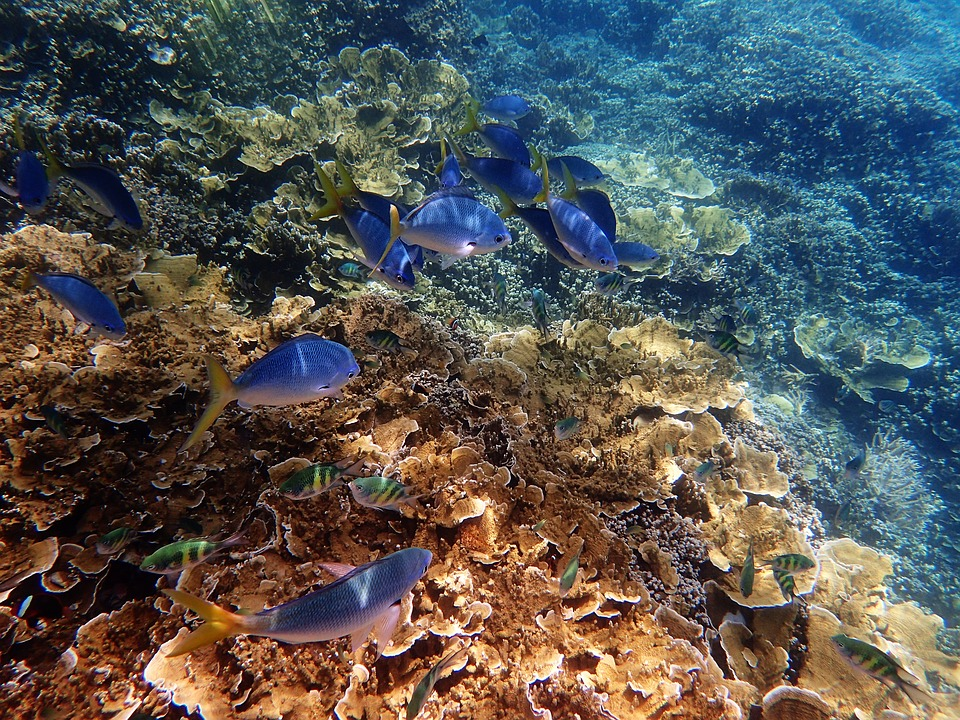 The coastal and marine environments of Australia are particularly vulnerable to impacts from climate change. Coral bleaching events are becoming more common with ocean temperature rises significantly impacting on coral reefs. For the Great Barrier Reef, in particular, these events are catastrophic for the reef ecosystem but also impact on the tourist experience and could even lead to declines in tourist numbers (Anderson, 2016). Who wants to travel halfway around the world to look at bleached coral? But it is not just the Great Barrier Reef which is impacted by climate change. Other marine and coastal environments in Australia also face sea level rises, ocean temperature rises and significant erosion which can be linked to climate change and may also influence on tourism (Becken, 2016).
The coastal and marine environments of Australia are particularly vulnerable to impacts from climate change. Coral bleaching events are becoming more common with ocean temperature rises significantly impacting on coral reefs. For the Great Barrier Reef, in particular, these events are catastrophic for the reef ecosystem but also impact on the tourist experience and could even lead to declines in tourist numbers (Anderson, 2016). Who wants to travel halfway around the world to look at bleached coral? But it is not just the Great Barrier Reef which is impacted by climate change. Other marine and coastal environments in Australia also face sea level rises, ocean temperature rises and significant erosion which can be linked to climate change and may also influence on tourism (Becken, 2016).
Zoning and Marine Protected Areas
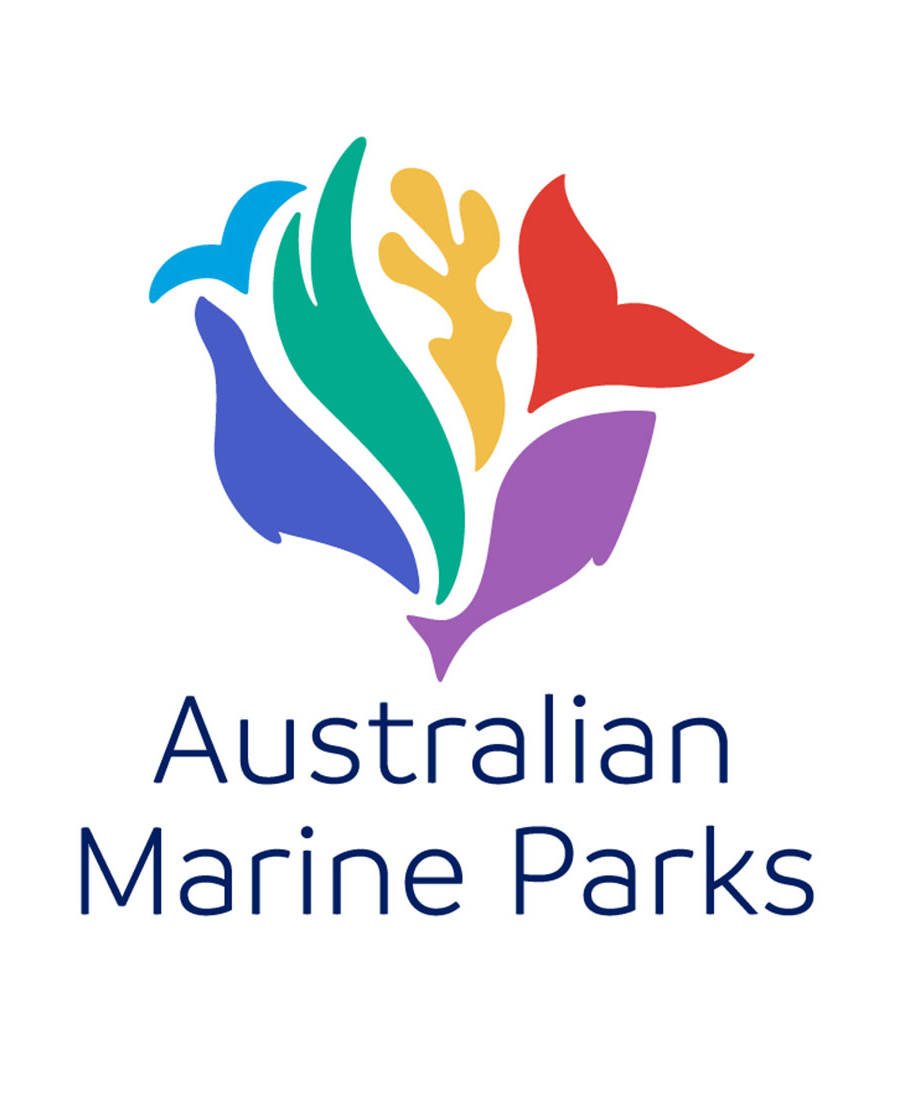 One of the ways that tourism and conservation are managed is through the network of marine parks and marine protected areas across Australia. A marine protected area is an area of sea dedicated for the protection and maintenance of biodiversity, natural and cultural resources and includes marine parks, nature reserves and locally managed marine areas (Department of the Environment and Energy, 2003). At a National level, 58 marine parks are managed across Australia by Parks Australia (Parks Australia, 2018).
One of the ways that tourism and conservation are managed is through the network of marine parks and marine protected areas across Australia. A marine protected area is an area of sea dedicated for the protection and maintenance of biodiversity, natural and cultural resources and includes marine parks, nature reserves and locally managed marine areas (Department of the Environment and Energy, 2003). At a National level, 58 marine parks are managed across Australia by Parks Australia (Parks Australia, 2018).
Marine protected areas are often divided into a number of different activity zones to allow for different activities to occur within the protected area. These zones include:
- Sanctuary zones
‘Look but don’t take’ areas where low impact activities like snorkelling and swimming can occur. Low impact tourism activities such as kayaking can also occur.
- Recreational use zones
A number of activities can occur in these areas including recreational fishing and tourist charters.
- General use zones
Activities such as sustainable fishing, aquaculture and petroleum exploration can occur provided they do not compromise conservation values.
- Special purpose zones
These zones are managed for a particular priority use or issues such as protection of habitat or seasonal breeding events. Other compatible activities may be allowed to occur in these zones.
The benefit of these zones for conservation of marine protected areas are effective when the zone area is sufficient, the nominated zone is appropriate with the environmental values present and the activities allowed are compatible with conservation (Meeuwig & Booth, 2017).
It is questionable whether Australia has got the management of marine protected areas using zones right yet. One thing is for sure, however, if we don’t adequately manage and conserve our marine and coastal environments the Australian tourism industry and our marketability to international visitors could suffer.
Download PDF: ISPL Insight – Marine & Coastal Environments
References
Anderson, A. (2016, May 27). Climate change, tourism and the Great Barrier Reef: what we know. Retrieved from The Conversation: https://theconversation.com/climate-change-tourism-and-the-great-barrier-reef-what-we-know-60108
Becken, S. (2016). Climate Change Impacts on Coastal Tourism. Gold Coast, QLD: CoastAdapt Impact Sheet 6, National Climate Change Adaptation Research Facility. Retrieved from https://coastadapt.com.au/sites/default/files/factsheets/T312_7_Coastal_Tourism.pdf
DBCA. (2018, September 5). Know Your Zones. Retrieved from Marine Parks and Reserves: https://www.dpaw.wa.gov.au/management/marine/marine-parks-and-reserves/71-know-your-zones?showall=
Department of the Environment and Energy. (2003). The Benefits of Marine Protected Areas. Canberra, ACT: Department of the Environment and Energy. Retrieved from https://www.environment.gov.au/system/files/resources/5eaad4f9-e8e0-45d1-b889-83648c7b2ceb/files/benefits-mpas.pdf
Meeuwig, J., & Booth, D. (2017, July 24). Australia’s new marine parks plan is a case of the Emperor’s new clothes. Retrieved from The Conversation: https://theconversation.com/australias-new-marine-parks-plan-is-a-case-of-the-emperors-new-clothes-81391
Parks Australia. (2018, September 5). Australian Marine Parks. Retrieved from Parks Australia: https://parksaustralia.gov.au/marine/parks/
Tourism Australia. (2018, September 5). Things to do. Retrieved from Aquatic and Coastal: https://www.australia.com/en/things-to-do/aquatic.html
Tourism Research Australia. (2018, September, 2018 5). Latest International Visitor Survey Results. Retrieved from Tourism Research Australia: https://www.tra.gov.au/International/international-tourism-results

